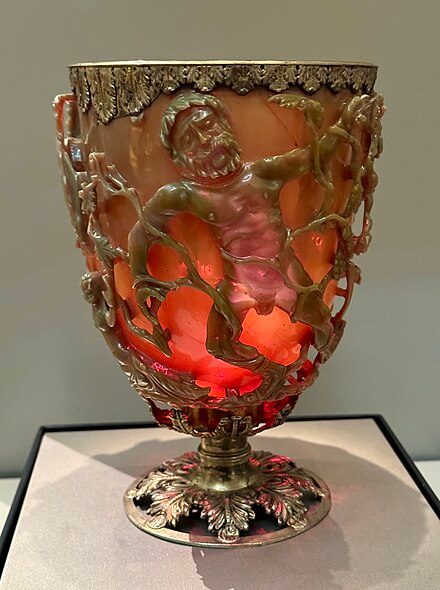Lycurgus cup

This cup from the 4th century CE is an example of using nanoparticles for coloring of glass. Given that it's the only surviving example of this type of coloring, it's hard to know whether the technique was more broadly used.
The glass has gold nanoparticles dispersed, which scatter and absorb light at specific wavelengths. The cup shows different colors depending on whether light is shone through or onto.
It is in display at the British Museum.
Comment
Share your thoughts on this note. Comments are not public, they are
messages sent directly to my inbox.
